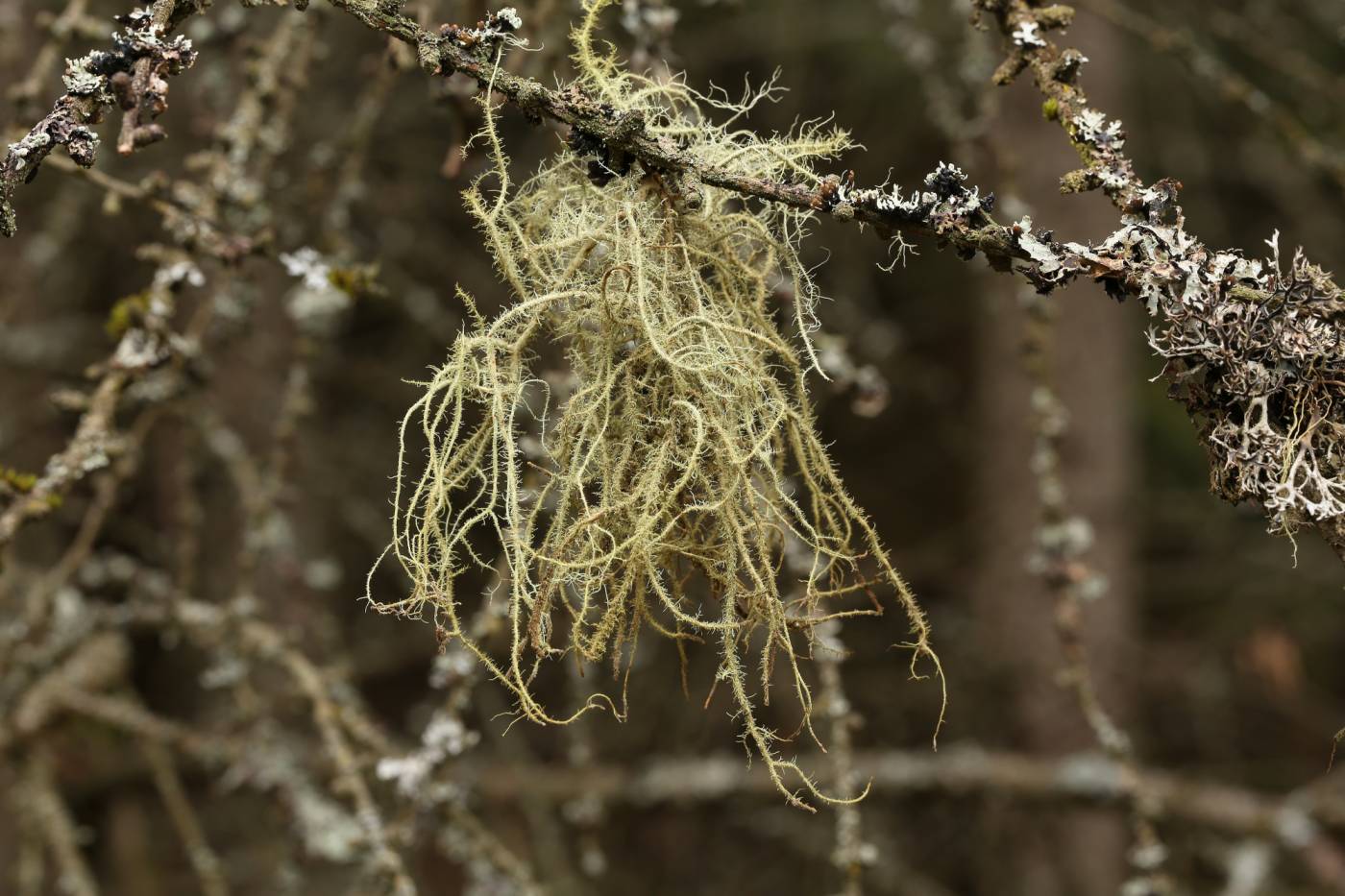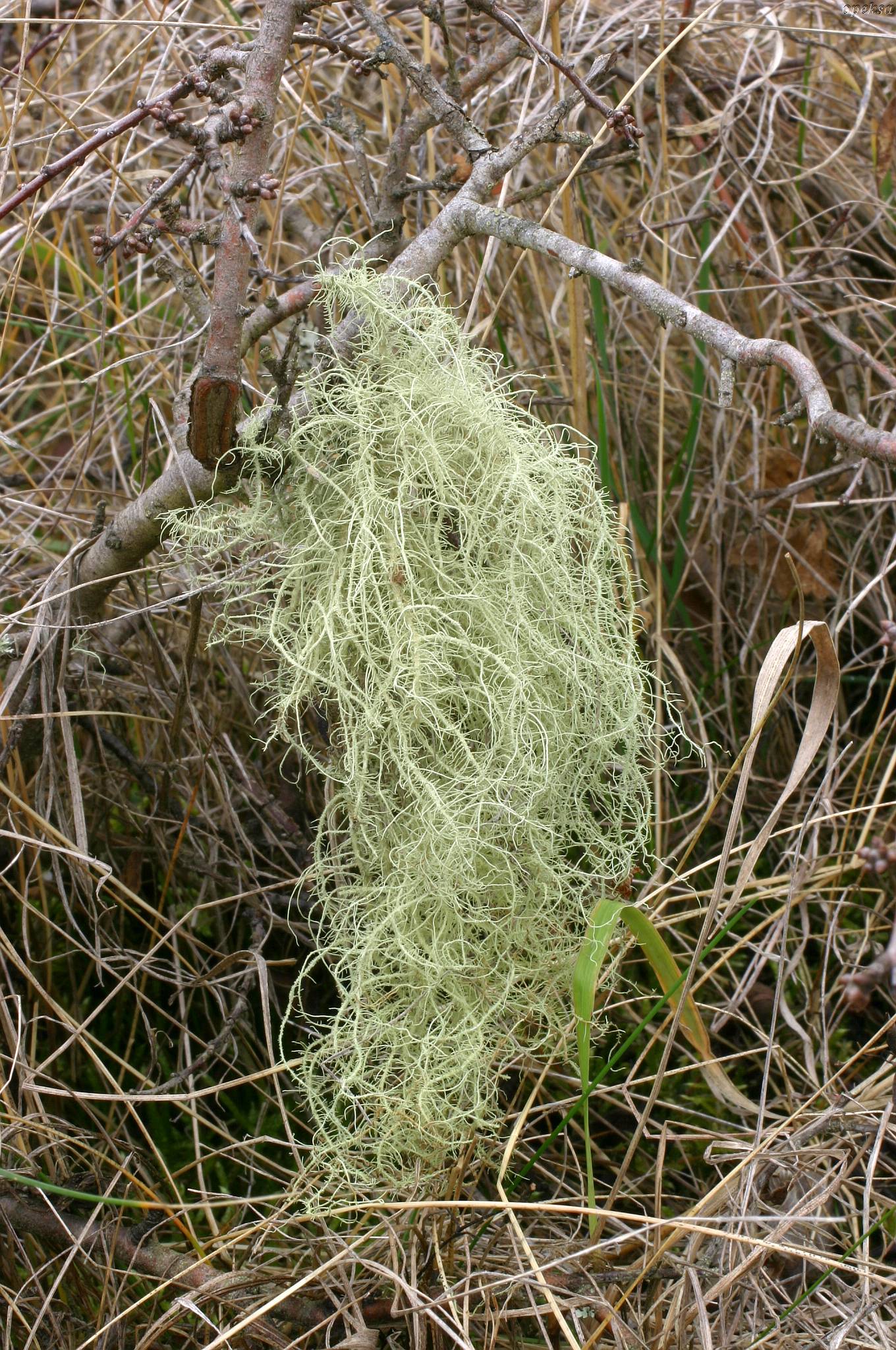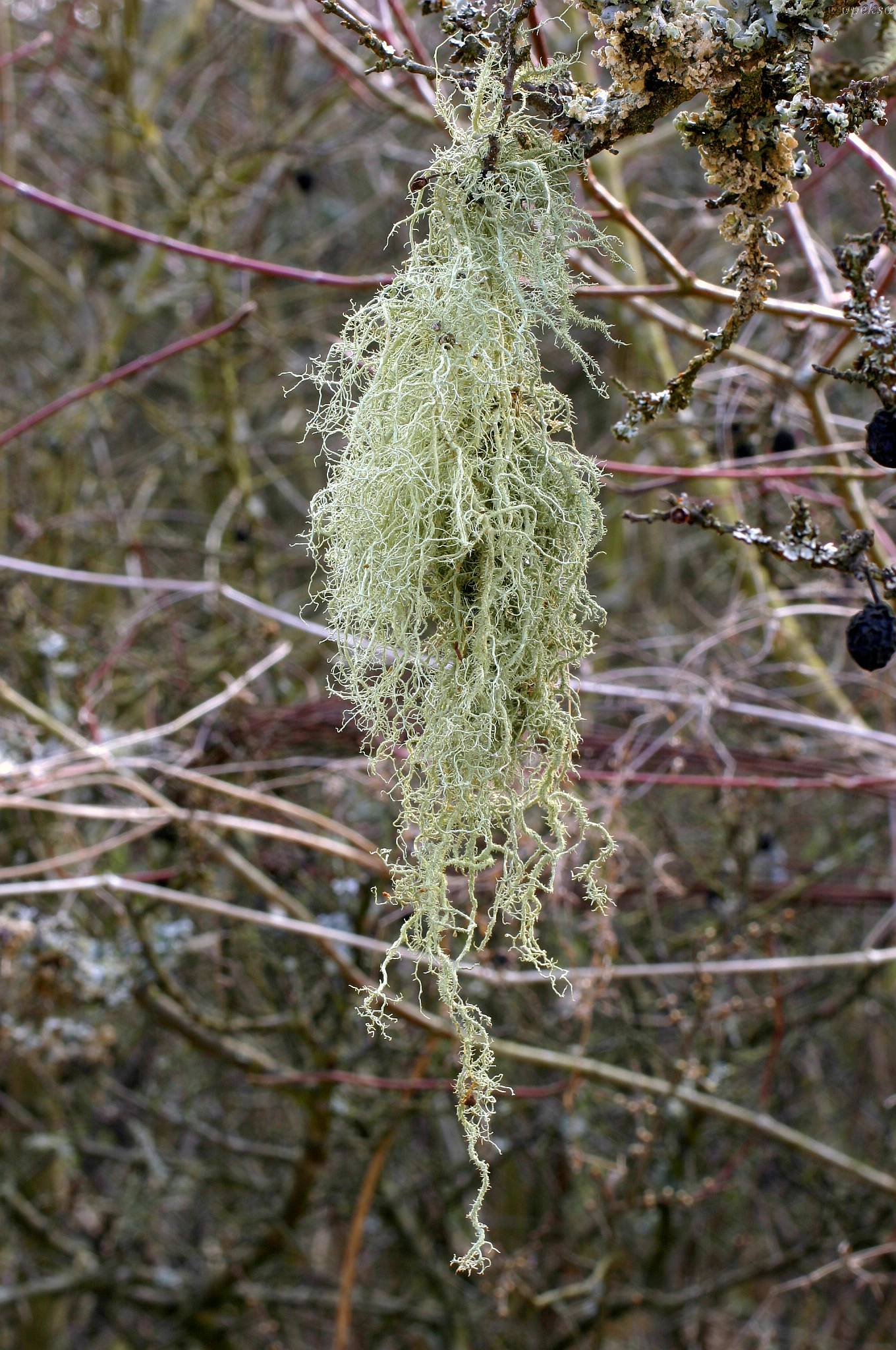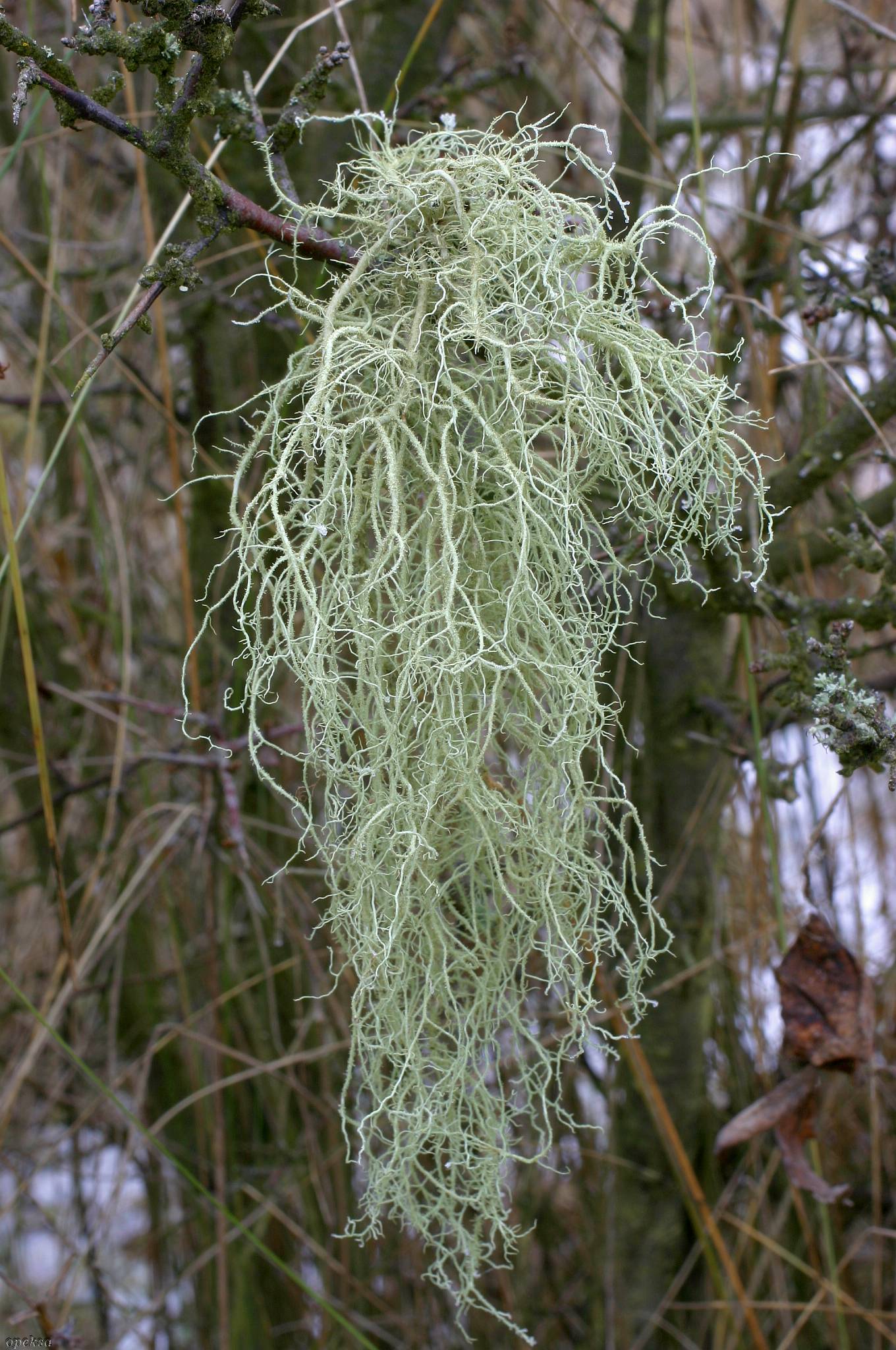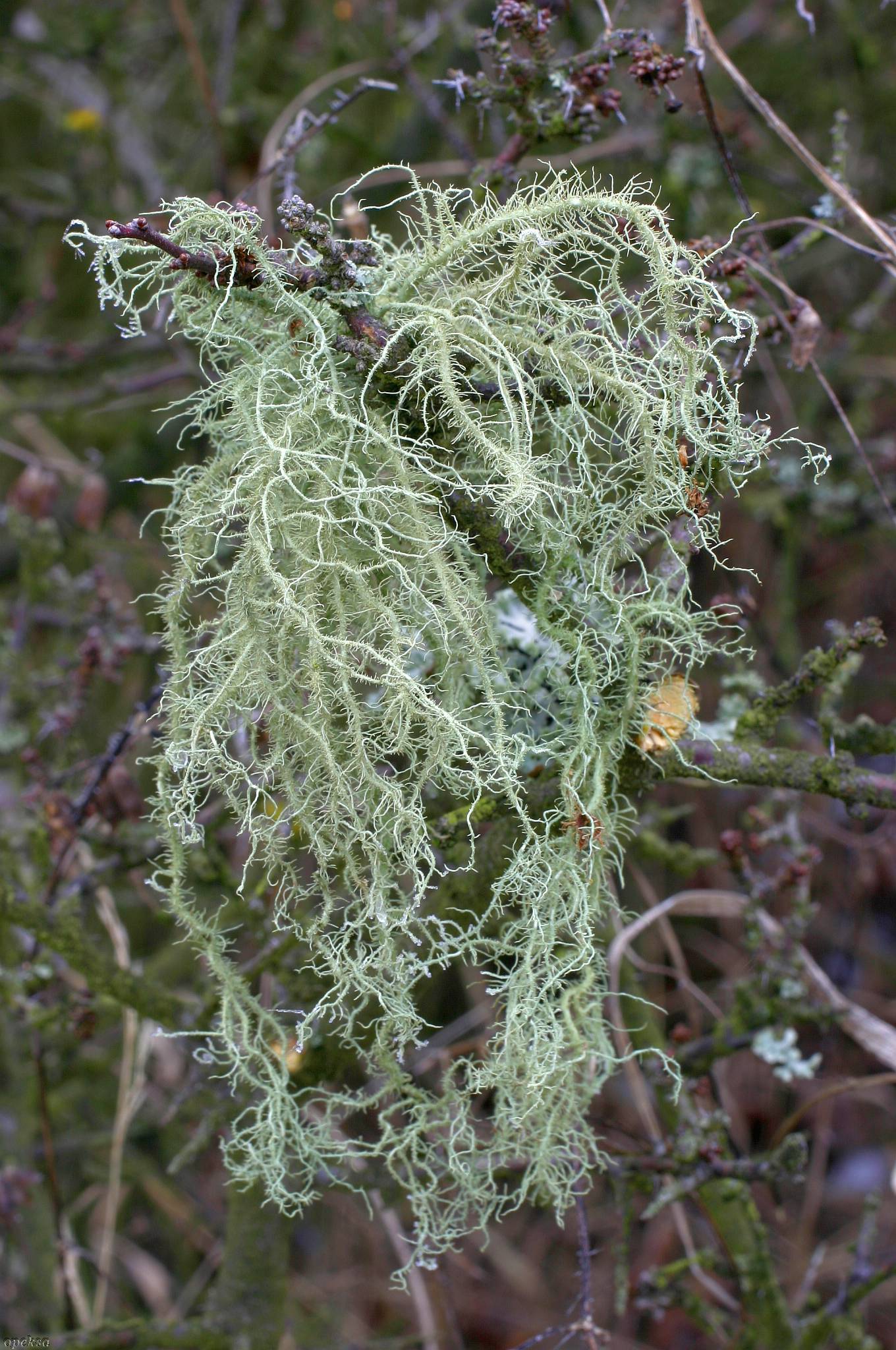One of the most common Usnea species in the Czech Republic, more commonly recorded as U. scabrata. It is characterized by a pendent thallus, irregularly thick branches, thin cortex and thick and dense to loose medulla. The species is very variable and a number of similar taxa, which are now synonymized, were distinguished in the past. Underdeveloped thalli might be confused with the likewise polymorphic U. dasopoga. The best distinguishing feature is the thinner cortex compared to the medulla in U. barbata.
Because of common misidentification, the distribution area of the species is little known. In Europe, it is probably mainly boreal-montane. Like other Usnea species, it receded in the second half of the 20th century due to acid rain. It has been spreading again since the beginning of the new millennium. Currently, it is quite common all over the Czech Republic, in forests and open areas, most abundantly in young larch plantations or in blackthorn and hawthorn shrubs.
Literature: Clerc P. & Naciri Y. (2021): Usnea dasopoga (Ach.) Nyl. and U. barbata (L.) F. H. Wigg. (Ascomycetes, Parmeliaceae) are two different species: A plea for reliable identifications in molecular studies. – Lichenologist 53: 221–230.
taxonomic classification:Ascomycota → Lecanoromycetes → Lecanorales → Parmeliaceae → Usnea
most frequented synonyms:Usnea scabrataRed List (Liška & Palice 2010):CR – critically endangered
Occurrence in the Czech Republic
All records: 188, confirmed 152. One click on a selected square displays particular record(s), including their source(s).
